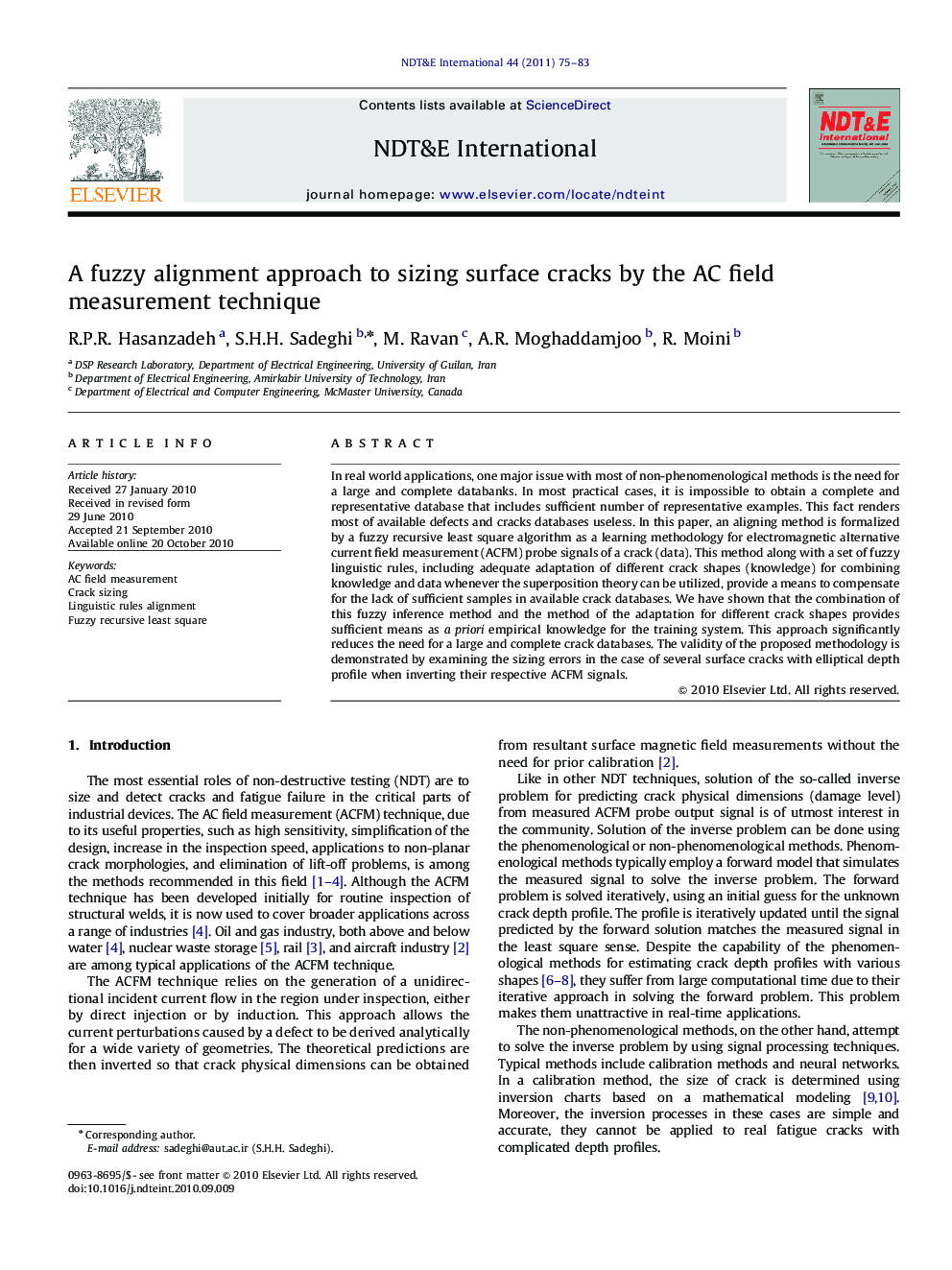| Article ID | Journal | Published Year | Pages | File Type |
|---|---|---|---|---|
| 295529 | NDT & E International | 2011 | 9 Pages |
In real world applications, one major issue with most of non-phenomenological methods is the need for a large and complete databanks. In most practical cases, it is impossible to obtain a complete and representative database that includes sufficient number of representative examples. This fact renders most of available defects and cracks databases useless. In this paper, an aligning method is formalized by a fuzzy recursive least square algorithm as a learning methodology for electromagnetic alternative current field measurement (ACFM) probe signals of a crack (data). This method along with a set of fuzzy linguistic rules, including adequate adaptation of different crack shapes (knowledge) for combining knowledge and data whenever the superposition theory can be utilized, provide a means to compensate for the lack of sufficient samples in available crack databases. We have shown that the combination of this fuzzy inference method and the method of the adaptation for different crack shapes provides sufficient means as a priori empirical knowledge for the training system. This approach significantly reduces the need for a large and complete crack databases. The validity of the proposed methodology is demonstrated by examining the sizing errors in the case of several surface cracks with elliptical depth profile when inverting their respective ACFM signals.
